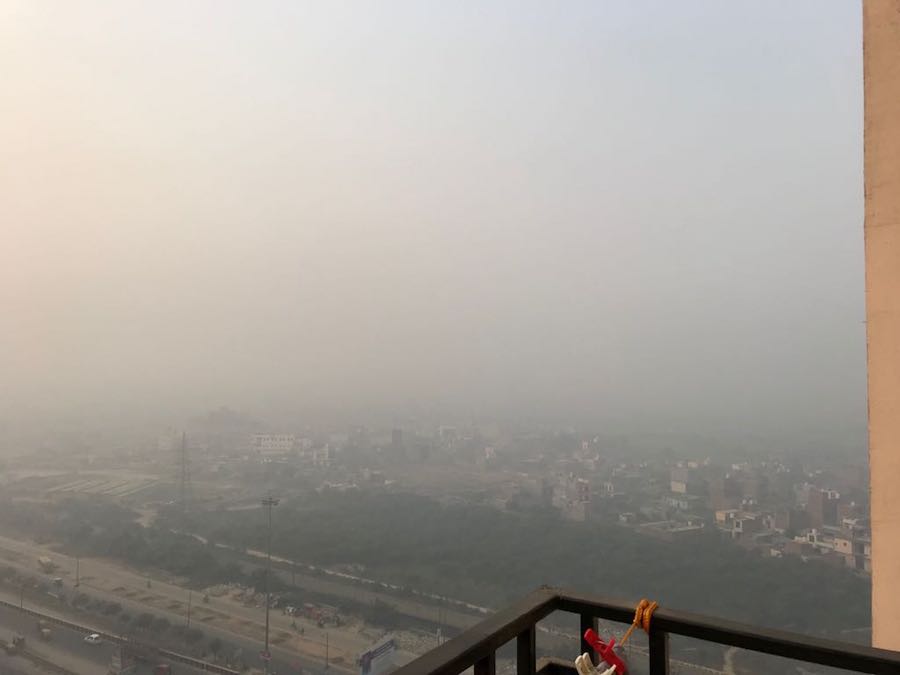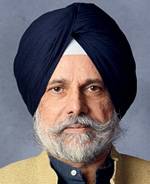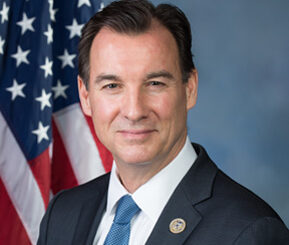

“The smog that choked millions did not stop at the India-Pak or India-Nepal borders. Nor at the borders of Indian states. What matters for India is not merely electoral victories for PM Modi, but what he does with the power he wields. Instead of tilting at windmills, why does he not start with “swacch” air? To do that he needs an integrated plan that is greener and yet equitable for the farmer, the worker, the urbanite and the entrepreneur”, says the author.
Toxic smog lingered over North India in the first half of November, dissipating after showers and strong winds. The air quality in New Delhi and the NCR remains poor as Particulate Matter (PM 2.5) hovers above safe limits. First to be blamed were farmers of Punjab and Haryana, although stalk burning after paddy harvesting is done across many states, and in Pakistan. Climate experts later argued that the crisis was exacerbated by a sandstorm in Arabia, well to India’s west.
The political drama that followed reflects lack of accountability among Indian leaders. The chief ministers of Delhi, Haryana and Punjab commenced a blame-thy-neighbor game. Arvind Kejriwal sought meetings with the other two hoping to escape being pilloried, normal for any mishap in Delhi even though both the Lieutenant-Governor and the Union government plead before the Supreme Court that he has no powers. Punjab CM Capt Amarinder Singh only wanted the PM to convene a meeting as he needed thousands of crores to coax his farmers to not burn stubble. The CM of Haryana, ML Khattar met Kejriwal after some dithering. But PM Modi was not seen or heard. What “baat”, if any, was in his “mann” could only be deciphered from his intervention at the East Asia Summit in the Philippines on November 14, or at election rallies in Gujarat. There was naturally no mention of the crisis across North India.
But the issue is broader than a tri-state squabble. The pollution levels in PM Modi’s own constituency, Varanasi, at the far end of UP were equally hazardous. Senator Sherry Rehman, senior leader of Pakistan People’s Party and friend of the late Benazir Bhutto, bemoaned in The Express Tribune that “half of Pakistan is enveloped in a nasty toxic smog”. She argued that these weather vagaries were attributable to climate change which was costing Pakistan 6 per cent of GDP. Quoting a UNDP report, she warned that Pakistan, already water stressed, would be dry by 2025 if it did not stop diverting 90 per cent of its waters to crops. She sensibly linked water, climate, energy and agriculture.
The Union government announced that the National Thermal Power Corporation is to now buy stubble from farmers for power generation. The question arises why this was not done after a similar crisis last year, when besides the odd-even scheme and the shutting of schools, no long-term solution was put in place. As usual, the National Green Tribunal rushed in where angels feared to tread, assuming the role of executive, and in effect, even stalling whatever little the Delhi Government was planning to do.
Coincidently, nearly 200 nations converged on Bonn for the review of action on “nationally determined contributions” (NDCs) under the 2015 Paris Agreement on climate change. Ironically, India and China having come on board at Paris on President Barack Obama’s urging by giving up their standard developing country chant that “polluters pay”, now found themselves left holding the baby as President Trump walked out of the accord. Fortuitously, US withdrawal is not implementable before November 4, 2020 — a day after the next US presidential election. The leadership of climate change action thus falls on Europe and the big emitters, India and China. Germany, the biggest European economy and host at Bonn, conceded that it would be unable to meet its commitment to reduce greenhouse-gas emissions to 40 per cent below the 1990 level, by 2020. That is due to its reliance on coal for power production due to its decision to abandon nuclear power generation after the Fukushima nuclear disaster as well as its strong growth and low oil prices.
UN climate chief Patricia Espinosa lamented that “we need more action, more ambition and we need it now”. That is, indeed, necessary if the world has to ensure that global temperatures do not exceed 2 degree Celsius above the mean pre-industrial age temperature. The pledges at Paris were, unfortunately, voluntary and the current trajectory of global warming can lead to the melting of ice-sheets by the end of this century and their disappearance from Greenland and Antarctica. The consequent rise in sea levels and climate change leads paleo-climatologist Lee Kump to conclude that the rate at which we are discharging carbon dioxide is 10 times the level when mass extinction occurred during the pre-dinosaur stage which killed 90 per cent of life in the ocean and 75 per cent on land.
India and China succeeded, along with 137 nations of the G-77 plus China, to make developed countries concede that acceptance by developing nations of voluntary commitment at Paris was contingent on the developed nations cutting emissions and providing finance for adaptation and mitigation by the developing world. At Paris, developed nations promised $100 billion by 2020 to help dispense green technologies. Canada and the UK formed this time at Bonn a 19-nation alliance to phase out coal power by 2030.
Nuclear power, once considered the answer to clean energy, is being abandoned by the developed world. Two new reactors — Westinghouse’s AP1000 and Areva’s EPR — are about to be commissioned in China and Finland, respectively. They are considered proofed against natural disasters, terror attacks or even missile hits. India will have to choose a middle path between reducing dependence on thermal power and choosing renewables plus nuclear power. The obvious conclusion is that India needs to reassess its relations with China and Pakistan as climate change is a shared threat and a cause for collaboration that rises above narrow nationalistic divisions.
Senator Sherry Rehman has framed the issue well. The smog that choked millions did not stop at the India-Pak or India-Nepal borders. Nor at the borders of Indian states. What matters for India is not merely electoral victories for PM Modi, but what he does with the power he wields. Instead of tilting at windmills, why does he not start with “swacch” air? To do that he needs an integrated plan that is greener and yet equitable for the farmer, the worker, the urbanite and the entrepreneur. His Gujarat model, as is now being argued, is skewed in favor of the last.
(The author is a former Secretary, Ministry of External Affairs)





317836 569914This is a fantastic web page, could you be interested in doing an interview about just how you developed it? If so e-mail me! 272841